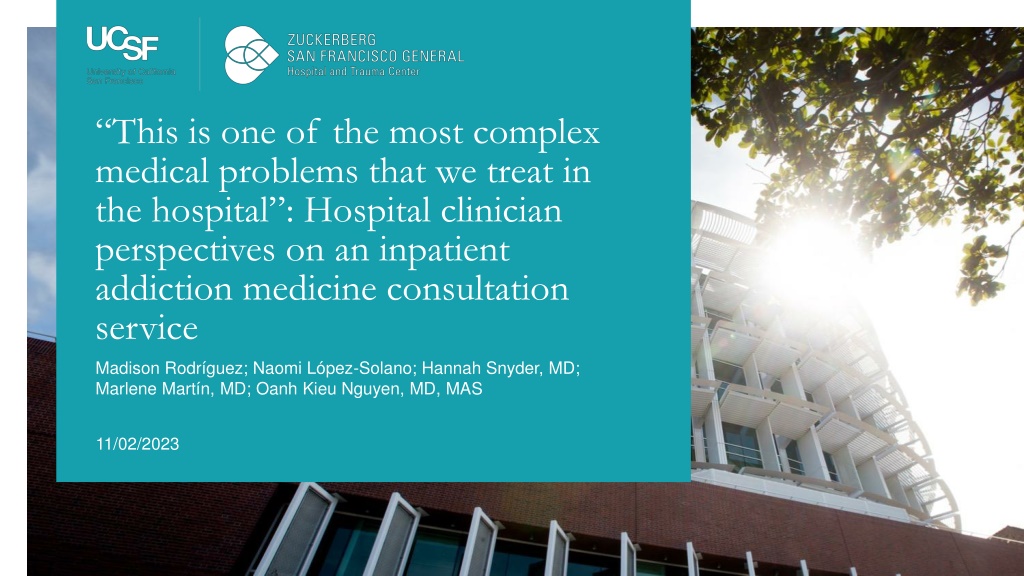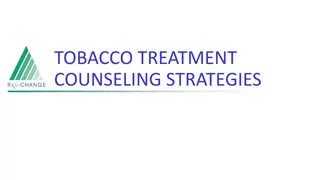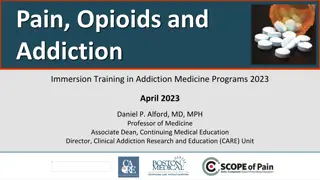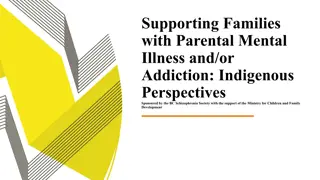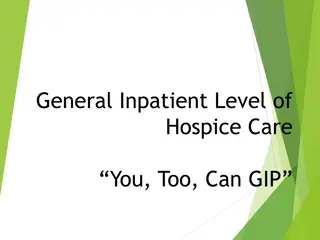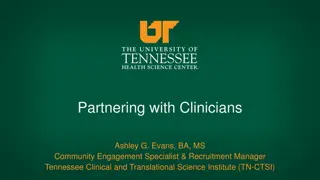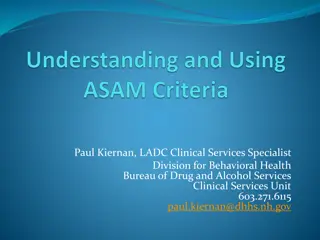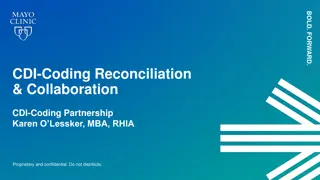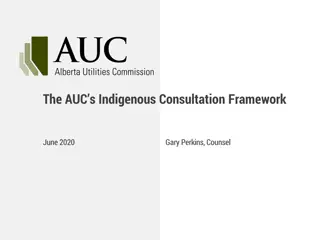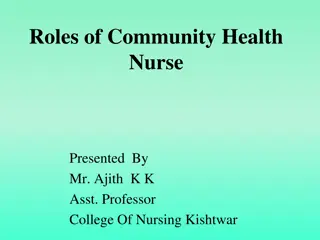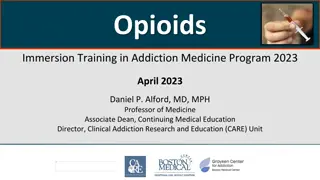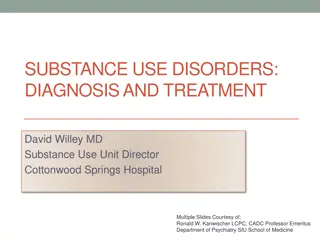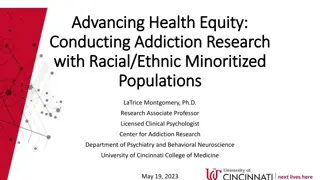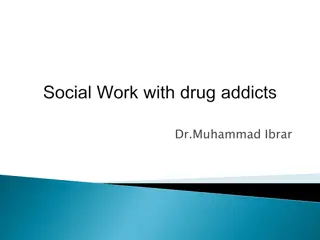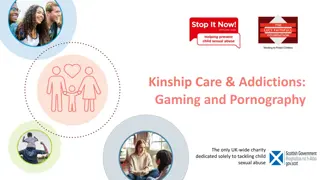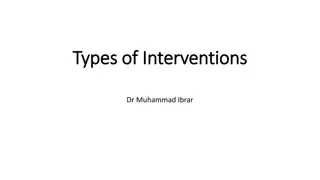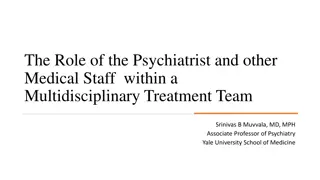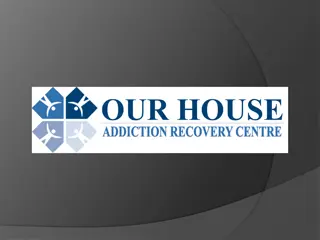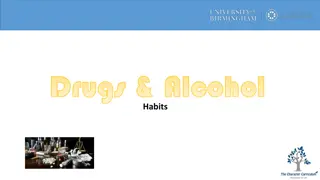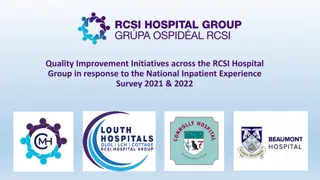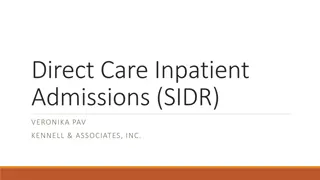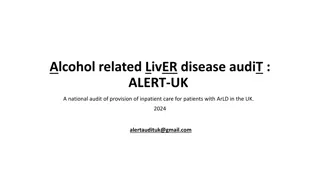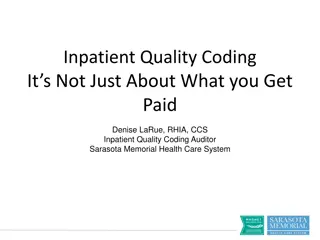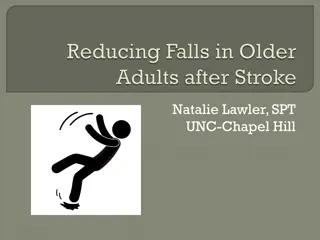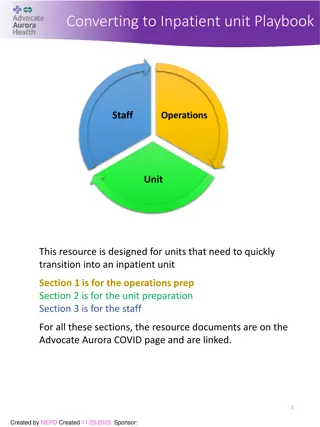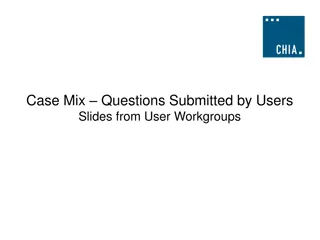Clinician Perspectives on Addiction Medicine Consultation Service in Inpatient Settings
Hospital clinicians share their perspectives on gaps in substance use disorder (SUD) care before and after the implementation of an Addiction Consultation Team (ACT) in an urban hospital. The study reveals the impact of ACT on addressing SUD care gaps, reducing stigma, improving patient rapport, and enhancing medical management, while also highlighting ongoing challenges and areas for improvement.
Download Presentation

Please find below an Image/Link to download the presentation.
The content on the website is provided AS IS for your information and personal use only. It may not be sold, licensed, or shared on other websites without obtaining consent from the author. Download presentation by click this link. If you encounter any issues during the download, it is possible that the publisher has removed the file from their server.
E N D
Presentation Transcript
This is one of the most complex medical problems that we treat in the hospital : Hospital clinician perspectives on an inpatient addiction medicine consultation service Madison Rodr guez; Naomi L pez-Solano; Hannah Snyder, MD; Marlene Mart n, MD; Oanh Kieu Nguyen, MD, MAS 11/02/2023
Background 1 of 9 hospitalized patients has a substance use disorder (SUD).These patients face many inequities due to stigma and lack of addiction knowledge among healthcare workers. Addiction consultation teams (ACT) have arisen to support hospitalized patients and healthcare members provide evidence-based care In 2019, our urban, academic, safety-net hospital launched an interprofessional ACT ACT Evaluation - AMERSA 2
Study Questions 1. What are clinicians perspectives on SUD care gaps prior to ACT? 2. What care gaps did ACT address? 3. What care gaps remain with ACT in place? ACT Evaluation - AMERSA 3
Methods Design Qualitative Population Setting Hospital-based clinicians Urban safety-net hospital and level 1 trauma center in San Francisco, California 1 year after ACT implementation 1-on-1 semi-structured interviews Aggregated codes using a mixed deductive and inductive analytic approach until thematic saturation Measures Analytic Approach ACT Evaluation - AMERSA 4
Results: Participant Characteristics (n=33) Characteristic Clinical role Physician Nurse Practitioner Years in practice, median (IQR) Subspecialty Medical specialtya Surgical specialtyb Obstetrics and gynecology Participants, n (%) 26 (79) 7 (21) 14 (10-21) 14 (42) 12 (36) 7 (21) a Includes internal medicine (n=9), family and community medicine (n=4), cardiology (n=1) b Includes trauma/general surgery (n=6), orthopedic surgery (n=4), neurosurgery (n=2) ACT Evaluation - AMERSA
Results Domain Themes SUD care gaps before ACT Lack of formal SUD treatment training Lack of outpatient care linkage Utilization of informal, patchwork resources Helped reduce SUD-related stigma Helped establish rapport with patients Improve medical management Established a formal mechanism for SUD treatment Ongoing challenges SUD-related stigma Specialty-specific gaps in post-discharge care Difficulty obtaining needed information for continuity of in-hospital SUD treatment Gaps filled by ACT ACT Evaluation - AMERSA
Results Domain Themes SUD care gaps before ACT Lack of formal SUD treatment training Lack of outpatient care linkage Utilization of informal, patchwork resources Helped reduce SUD-related stigma Helped establish rapport with patients Improve medical management Established a formal mechanism for SUD treatment Ongoing challenges SUD-related stigma Specialty-specific gaps in post-discharge care Difficulty obtaining needed information for continuity of in-hospital SUD treatment Gaps filled by ACT ACT Evaluation - AMERSA
Lack of formal SUD treatment training before ACT I m [comfortable] managing withdrawal symptoms with the other stuff, like Klonopin, Loperamide, etc. isn t an issue, but it s just [I have] this discomfort [and] lack of experience around titrating treatment for opioid use disorder. Methadone, buprenorphine, etc. Participant 329 ACT Evaluation - AMERSA
Lack of outpatient care linkage before ACT The handoff on leaving the hospital was a bit [tricky] because for the most part neither we nor our social work colleagues were necessarily that familiar with the different types of treatment programs available in the outpatient setting. So, it was often just like a handoff back to primary care who we hoped would link the patient to outpatient [SUD care] good enough. Participant 321 ACT Evaluation - AMERSA
[Before ACT, SUD care was] ...like phone-a-friend. Because as I said, this has never been my expertise . We used to do weird things. I feel like we used to consult the pain service [because there s] this idea of, well, they probably have more understanding of interactions between different narcotics [and] they were kind of always like, What s your specific pain question? Patchwork of Resources before ACT Participant 330 ACT Evaluation - AMERSA
Results Domain Themes SUD care gaps before ACT Lack of formal SUD treatment training Lack of outpatient care linkage Utilization of informal, patchwork resources Helped reduce SUD-related stigma Helped establish rapport with patients Improve medical management Established a formal mechanism for SUD treatment SUD-related stigma Specialty-specific gaps in post-discharge care Difficulty obtaining needed information for continuity of in-hospital SUD treatment Gaps filled by ACT Ongoing challenges ACT Evaluation - AMERSA
ACT helped reduce SUD-related stigma The immense amount of compassion that I now have [for patients with SUDs] has been transformative [in terms of meeting] them where they are and [being] able to give them high quality care without that stigma or judgement Participant 332 ACT Evaluation - AMERSA
ACT helped establish rapport with patients I think the most helpful thing is that they [ACT] actually talk to the patient. I think that it helps for patients to be heard ACT does a good job of listening to the patients. And I think that helps overall I just can t listen to them to the extent that ACT can... Participant 317 ACT Evaluation - AMERSA
[The most helpful thing about ACT is] that I can call an expert and I have enough humility to know that I am not an expert in addiction medicine and that I am probably not asking the right questions or thinking about all of the multiple facets of it. [ ] I think ACT] has allowed me to feel like I am providing better care for the patient ACT helped improve inpatient care Participant 316 ACT Evaluation - AMERSA
Results Domain Themes SUD care gaps before ACT Lack of formal SUD treatment training Lack of outpatient care linkage Utilization of informal, patchwork resources Helped reduce SUD-related stigma Helped establish rapport with patients Improve medical management Established a formal mechanism for SUD treatment Ongoing challenges SUD-related stigma Specialty-specific gaps in post-discharge care Difficulty obtaining needed information for continuity of in-hospital SUD treatment Gaps filled by ACT ACT Evaluation - AMERSA
The schools prioritize things like heart failure and diabetes and cancer. Don t really prioritize cocaine use, homelessness, and structural racism. They may speak about them in academic terms, but they don't actually teach people the skills to try to address people at the front line, How do I help this person in front of me whose life is being affected very deeply by this issue? SUD not treated with the same priority as other medical conditions - Participant 311 ACT Evaluation - AMERSA
I think this is one of the most complex medical problems that we treat in the hospital it takes continuity. So, I feel like the inpatient management is just the tip of the iceberg, and then, the outpatient management is what really matters and being able to provide patients with the resources and coordination to continue cessation. Gaps in care transitions - Participant 309 Presentation Title 17
Summary of Findings ACT meaningfully addresses knowledge and care gaps for hospital clinicians and patients with SUD within hospital walls Many gaps remain around streamlining outpatient-to-inpatient and inpatient- to-outpatient care transitions and specialty-specific co-management ACT Evaluation - AMERSA
Implications Inpatient addiction medicine consultation services should be considered an essential medical subspecialty consultation service at all hospitals Increased attention to SUD-related care transitions is needed to maximize the potential impact of hospital-initiated SUD treatment after leaving the hospital We did not address challenges with financing this model of care, which is a major threat to sustainability ACT Evaluation - AMERSA
Questions and Discussion Contact us: Madison.Rodriguez@ucsf.edu Oanh.Nguyen@ucsf.edu Marlene.Martin@ucsf.edu Thanks to ACT patients and members California Health Care Foundation ACT Evaluation - AMERSA
References 1. Alcohol-related deaths, which increased during the first year of the COVID-19 pandemic, continued to rise in 2021. National Institute on Alcohol Abuse and Alcoholism. (https://www.niaaa.nih.gov/news-events/research- update/alcohol-related-deaths-which-increased-during-first-year-covid-19-pandemic-continued-rise-2021). 2. Drug Overdose Death Rates. National Institute on Drug Abuse; 2023. 3. Suen LW, Makam AN, Snyder HR, et al. National Prevalence of Alcohol and Other Substance Use Disorders Among Emergency Department Visits and Hospitalizations: NHAMCS 2014-2018. J Gen Intern Med 2022;37(10):2420-2428. (In eng). DOI: 10.1007/s11606-021-07069-w. 4. Englander H, Jones A, Krawczyk N, et al. A Taxonomy of Hospital-Based Addiction Care Models: a Scoping Review and Key Informant Interviews. Journal of General Internal Medicine 2022;37(11):2821-2833. DOI: 10.1007/s11606-022-07618-x. ACT Evaluation - AMERSA
Methods One-on-one semi-structured interviews with hospital-based clinicians in an urban safety-net hospital and level 1 trauma center in San Francisco, California 1 year after full ACT implementation We aggregated codes using a mixed deductive and inductive analytic approach into broader themes identifying significant patterns and capturing key findings related to our evaluation questions ACT Evaluation - AMERSA 22
